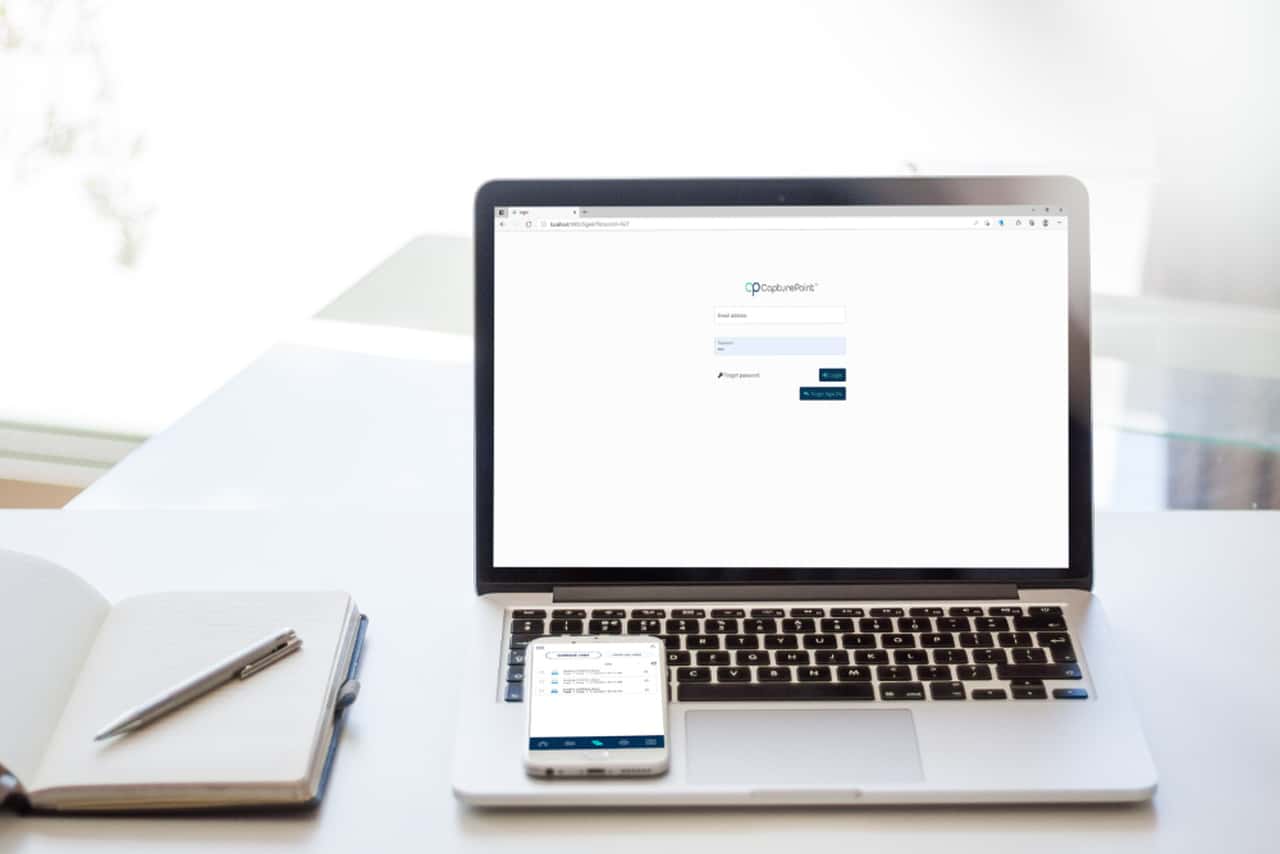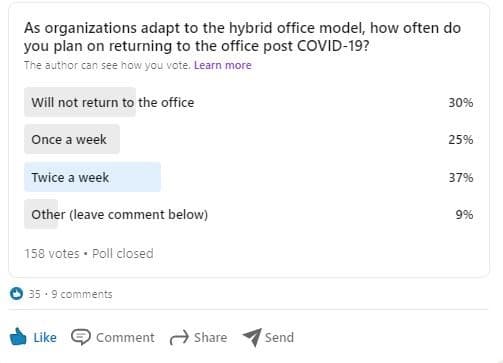
It has been over a year since many of us have started working remotely, and while lock down is still on going for many countries, most of our staff continue to work from home, only having to go into the office if needed.
As more organizations start to adapt to the hybrid office model, we were curious about how people enjoyed working remote from home and if they planned on returning to the office post COVID-19.
To further understand this trend towards the hybrid office, we launched a remote work poll in April 2021.
We asked people how often they are planning to return to the office post COVID-19 and provided four options ranging from never returning to the office to twice a week. The survey was conducted over two weeks, with a total of 158 people participating and sharing their opinions.
Remote Work Survey Results

Surprisingly, many people still preferred to have more options when it comes to remote working.
Among all 158 participants, a big majority (91%) of people either still want to go back to the office for at least once a week or work from home permanently.
Of that 91%, most participants (37%) still prefer to work in the office twice a week, while 30% of them do not want to return to the office at all. Leaving a quarter (25%) of participants preferring to go in only once a week.
The remaining 9% of participants stated their work routines would not be affected, since some of them have been back to the office full-time for a while and will continue to do so post COVID-19.
Given these results, this shows us that many of us, in remote friendly environments, still prefer to have the freedom and option of working at home or going into the office, giving better work-life balance and overall satisfaction.
Where Do We Go from Here?
Without a doubt, the hybrid office is the future of work. Companies need to accelerate digital technology and automation adoption to ensure business continuity and productivity in the hybrid workplace.
To start, organizational leaders must come up with an effective digital transformation strategy for business growth to allow their organization to make the most of newer technologies.
The hybrid workplace requires strong data integrations between multiple digital infrastructures and employees who work remotely.
This can be a challenge for many businesses that have an overwhelming amount of unstructured information management and legacy or manual processing systems.
This is especially true in the now highly digitized world, where organizations need to save more time from manual processes and focus on higher priority goals.
This can only be achieved through digital transformation and automation, which enables organizations to be more informed and better connected throughout every interaction and workflow process at home or in the office.
Data security has also become an increasing concern as more employees begin to work remotely, companies need to pay attention to the accessibility of business data in the cloud and not overlook any security holes.
The Future of Work
The shift towards the hybrid workplace has brought many benefits for employees, while also increasing organizational awareness and the importance of digital transformation.
Ultimately, the hybrid office is the future of work, where employees have the choice of remotely working from home, while also being able to go into the office for in-person collaboration and better work-life balance.






